This is the unfinished story of a city. Once the epicentre of one of the world’s greatest empires, it has been a capital longer, almost, than any other. This is the story of London
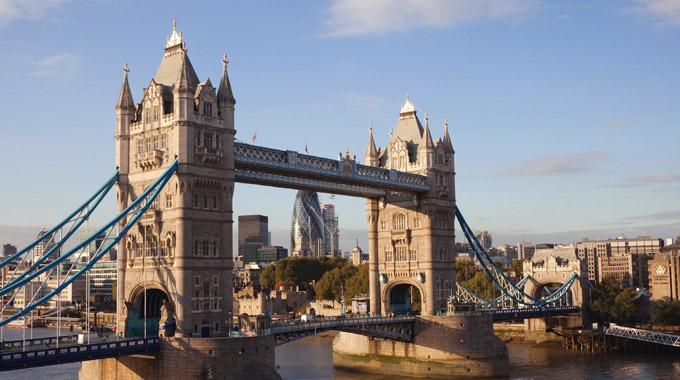
When Aulus Plautius invaded Britain in AD43, his army made rapid progress north to the Thames, although precisely where it was crossed is unknown. The river then was very different. It was wide, shallow, fordable in places, and largely surrounded by marshland – with the exception of two gravel hillocks on its north bank where Cornhill and St Paul’s Cathedral stand today. It was on these hillocks that the Romans chose to build their new city: Londinium. And thereby, early in this great city’s history, presented us with its most enduring mystery: why did they name it thus? A best guess is that it was a derivation of a Celtic name.
Within a few years they had built a bridge across the river, close to the present London Bridge. By AD100, most of the buildings associated with a modern Roman city had been built; and by AD200, it had been walled. The city then was remarkably similar in size and shape to the present City of London, or Square Mile.
Sections of the wall remain, one of the best stretches, albeit with Tudor additions, being in the vicinity of St Alphage churchyard – near the street that is aptly named London Wall. Another is at Tower Hill, close to the underground station, overlooking the Tower of London.
Almost two thousand years of continuous habitation mean that Roman London lies 20ft beneath the surface, but a surprising number of remains have been found. Of necessity, many that have been excavated have had to be infilled, but there are notable exceptions. The crypt of St Bride’s church in Fleet Street, for example, contains the remains of a tessellated pavement. Had it not been for the devastation caused by a wartime bomb, it may never have been found. Similarly, the crypt museum of All Hallows by-the-Tower has part of a domestic building’s tessellated floor.
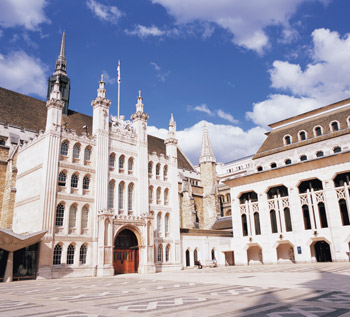
But the most spectacular of all Roman finds is one of the most recent: an amphitheatre discovered in 1988 when the Guildhall Art Gallery was being built. It had long been known that Londinium had such a building, but nobody knew where. Now the mystery had been solved, the discovery being so significant that the gallery was redesigned to incorporate the Roman remains that are now displayed there.
For the most part, Londinium was built on the north bank of the river, with limited development on the south side. This was demonstrated by the discovery, in September 2011, of a bath house just to the south of Southwark Bridge. When the Romans left for good, the city’s growth ground to a halt – one of the few subsequent notable events being the building, in AD604, of the first St Paul’s Cathedral.
Indeed, for 400 years or more there was little expansion, London remaining true to its Roman form. The spread of London was re-started by Edward the Confessor, when he chose to forsake his City residence for a new home adjacent to an abbey being built on Thorney Island. Barely three miles away, it was surrounded by marshes to the north, the Thames to the south and the River Tyburn and its tributary to the west and east. It was known as a ‘terrible, uncultivated’ place, taking its name from the scrubby terrain. The abbey became known as West Minster (St Paul’s being East Minster). Building continued piecemeal for several hundred years, and with it came people and traders. London’s great march west had begun.
Edward died just days after the abbey was consecrated in 1065, meaning that the soon-to-invade William the Conqueror would be crowned there a year later. William wasted little time in stamping his authority on the capital, this time to the east. And so was born one of London’s most iconic landmarks, the Tower of London.
The years that followed were a period of consolidation. In 1123, one of its oldest churches – St Bartholomew-the- Great, in West Smithfield, was founded as a priory; in 1176 a new, stone London Bridge was started; and in 1200, Lambeth Palace was built on the south bank. Proceedings, meanwhile, were jollied along by an earthquake in 1247.
During the late 13th century, the first of several palaces was built away from the centre, south of the river. Eltham is now well-established as part of Greater London; then, though, it was the height of rurality – its palace being adapted from a manor house that was gifted to Edward, Prince of Wales – later to be Edward II. Popular with Henry VIII during the early years of his reign, it fell into a state of ruin as Greenwich Palace became more favoured by monarchs. Although Eltham’s Great Hall served a somewhat ignominious time as a barn, it was not yet done for. During the 1930s, a fine private residence was built adjoining the ruins. Now in the care of English Heritage, it is one of London’s best examples of art-deco architecture.
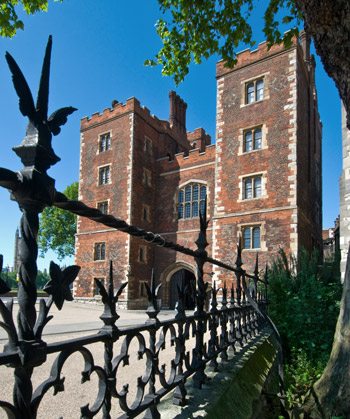
Meanwhile, Westminster’s importance continued to grow. Not only was it the home of parliament, but in 1476 William Caxton set up England’s first printing press there. To the east, the established city was fast becoming a centre of commerce – a development that brought success to a great number of individuals. Among these was a merchant named Richard Whittington – four times Lord Mayor of London (not three, as legend insists). He was one of the city’s greatest benefactors, his legacy surviving in the form of St Michael Paternoster Royal (which he rebuilt), in College Hill. He lived next to it, and is buried there.
As Britain became a maritime force with which to be reckoned, development spread downstream. Deptford, a few miles from the centre of London, was still only a fishing village. That was to change when, in 1513, Henry VIII established a naval dockyard there – popularly known as King’s Yard. Here, Francis Drake was knighted in 1581.
At about the same time as Deptford opened, Henry also established a second dockyard, further downstream at Woolwich. It survived until 1869, but by then it had become famous for military matters of a different kind. The Royal Arsenal had moved to Woolwich in 1717; it was Britain’s principal munitions manufacturing centre and covered over 1,500 acres. The military finally left during the early 1990s and many of the old ordnance buildings turned over to fashionable apartments. Firepower! – the museum of the Royal Artillery, is housed in a former factory building.
As London developed, royalty felt the need to escape what was, on occasion, becoming a rather unpleasant place. In 1333, for example, a ban had been imposed prohibiting the slaughter of animals on the city’s streets. Greenwich Palace was already well-established when Henry VIII was born there in 1491. As he enjoyed the hunting in Greenwich Park, it rapidly became one of his favourite homes. It was also the main summer home of Elizabeth I (where Raleigh famously covered a puddle with his cloak to prevent her feet getting wet); and was eventually gifted by James I to his queen, Anne of Denmark. She is best-remembered for having Queen’s House built, although she failed to live to see it finished. It’s a building that is something of a geometric Utopia: the galleried Great Hall is a perfect 40ft cube, and the ceiling is a mirror image of the finely patterned floor. The palace, meanwhile, was demolished to make way for the Royal Naval College in 1694.
Other monarchs chose different out-of-town residences, Edward III and Henry VII preferring Richmond Palace, for example. The gatehouse is all that remains. Richmond Park has fared rather better. Extending to almost 2,500 acres, it was enclosed by Charles I – his intention being to make it a royal hunting ground. Now a national nature reserve, it is London’s largest park. Charles’s plan was that it should serve nearby Hampton Court Palace – much loved, later, by William and Mary. George II was the last monarch to use it.
London, meanwhile, continued to head south. A notable leap came during the reign of Elizabeth I, when several theatres were built in Southwark. The first, the Rose, appeared on Bankside in 1587; the most famous being the Globe of 1598 – now handsomely rebuilt.
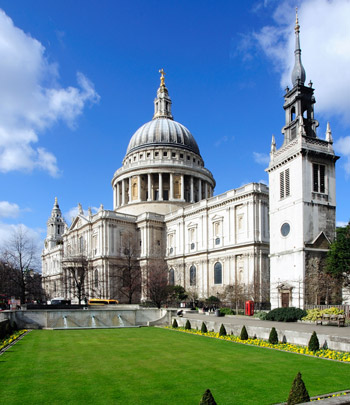
The Great Fire in 1666 served only to demonstrate how compact London still was. (Although not so compact as to prevent Samuel Pepys burying his Parmesan cheese in his garden before fleeing.) The upside, for us at least, is the fine legacy of architecture that the rebuilding produced: not just Wren’s St Paul’s, but also his churches (St Stephen Wallbrook being a dummy run for the cathedral).
The Monument famously marks where the fire started. Almost. Layed flat in an easterly direction, its tip would mark the precise point. A second memorial marking the point where it stopped is on a building at the corner of Giltspur Street and Cock Lane.
London continued to expand, a fact reflected by an act of 1711 authorising the building of fifty churches to serve the burgeoning population. But in terms of architecture, one monarch had more influence than any: the Prince Regent, George IV. He was a particular supporter of the architect John Nash, who gave us Regent Street (sadly now in plan only), and the 487-acre Regent’s Park. The park is still extant, as are the fine terraced villas that encircle it.
Meanwhile, London had slowly been creeping east – a process accelerated by the passing, in 1799, of the West India Dock Act. Hitherto, London’s docking facilities had been largely inefficient – dependant on the tides, and particularly prone to pilferage. The act was seen as the solution to these difficulties, thus allowing the West India Dock Company to build West India Docks. They were the capital’s first fully enclosed, warehoused docks.
The principle caught on, and over the next eighty years London’s docks expanded ever further east. This, of course, was the great era of Victorian industrial enterprise – dock building culminating with the construction of the Royal Docks. The Royal Victoria opened in 1855; the Royal Albert in 1880. Combined, they stretched more than two miles, their water area alone covering 175 acres.
With the docks came industry. What was once a bleak, inhospitable area was rapidly developed, not always with pleasant consequences. Silvertown, an area south of the Royal Docks, gained a reputation for being particularly unpleasant. The Victorians might not especially be remembered for environmental legislation, but they did pass an act during the earlier years of Victoria’s reign that severely restricted industrial development in central London. Silvertown fell just outside the restricted area, its riverside setting thus attracting an odd combination of chemical industries and food processors (including Abram Lyle of golden syrup fame, and Henry Tate, the sugar refiner).
The docks now have fallen silent, and much industry is gone; Docklands, as we have come to know it, is greatly changed. It conjures up images of Canary Wharf, but even that only occupies two per cent of the 8.5 square miles taken over by the (now defunct) London Docklands Development Corporation in 1981. Cleared and landscaped, much of the rest remains a brown field site – paradoxically one of Britain’s greenest.
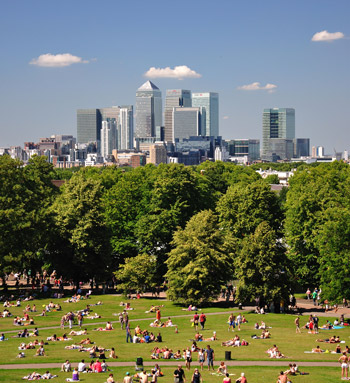
But it was the breaking of another new dawn that had the greatest influence on the capital’s growth. In 1836, the railway arrived with the London & Greenwich Railway. Initially, it ran from Bermondsey to Deptford, but by 1838 connected London Bridge with Greenwich.
Soon, having to work in London did not necessarily mean having to live there, the railway bringing hitherto isolated outskirts within easy reach. One company stamped its mark on London more than any other: the Metropolitan Railway. It started off modestly in 1863, running 3.5 miles from Paddington to Farringdon. By 1868 it had reached Swiss Cottage, and by 1880 Harrow-on-the-Hill. The Met, as it became known, was heading northwest towards the Chilterns.
As was customary in the railway industry, the Met purchased more land than required. It used this surplus to build housing and estates, an ingenious move. Those attracted to such developments invariably had a need to travel to work in London. And they used… the Met. It was a win-win situation, so much so that it set up an independent company to run its house-building affairs.
The first estate was built at the end of the 19th century in the vicinity of Willesden Green station, with others following at, among many others, Ruislip and Amersham. Building continued almost unabated for forty years, the railway even introducing the term Metro-land to describe its ambitious developments. Between 1915 and 1932, an annual guidebook was produced extolling Metro-land’s delights: the publicity department even had “Live in Metro-land” engraved on carriage door handles. This was the Metro-land so beloved of Sir John Betjeman – a land of “leafy lanes in Pinner,” of “green fields and misty sky.”
While the Met’s house-building activities were almost unique, the principle of the railway attracting development was anything but. In Chislehurst and Petts Wood in South London, for example, one particular developer played a significant role – William Willett developed large areas here with his trademark mock-Tudor housing. Nor was it his only contribution to Britain’s social development, for it was Willett who ‘invented’ daylight-saving time.
Whatever developers may throw at Londoners, they have always remained fiercely protective of their open spaces. It is a brave person who tries to rob them of these, as Sir Thomas Wilson discovered in 1829 when he attempted to build on Hampstead Heath. Londoners fought tooth and nail for more than forty years to save it – a battle that only ended when Wilson died. Today, the heath remains one of London’s most popular open spaces.
Such parks and gardens are now more treasured than ever. Perhaps the capital will continue to expand, absorbing – but still fiercely preserving – more of them. Yet exactly when it might reach its limits is hard to know. And if that sounds a little nebulous, it is merely because there is a second enduring mystery about London. Quite where does it end now?






 © 2024
© 2024